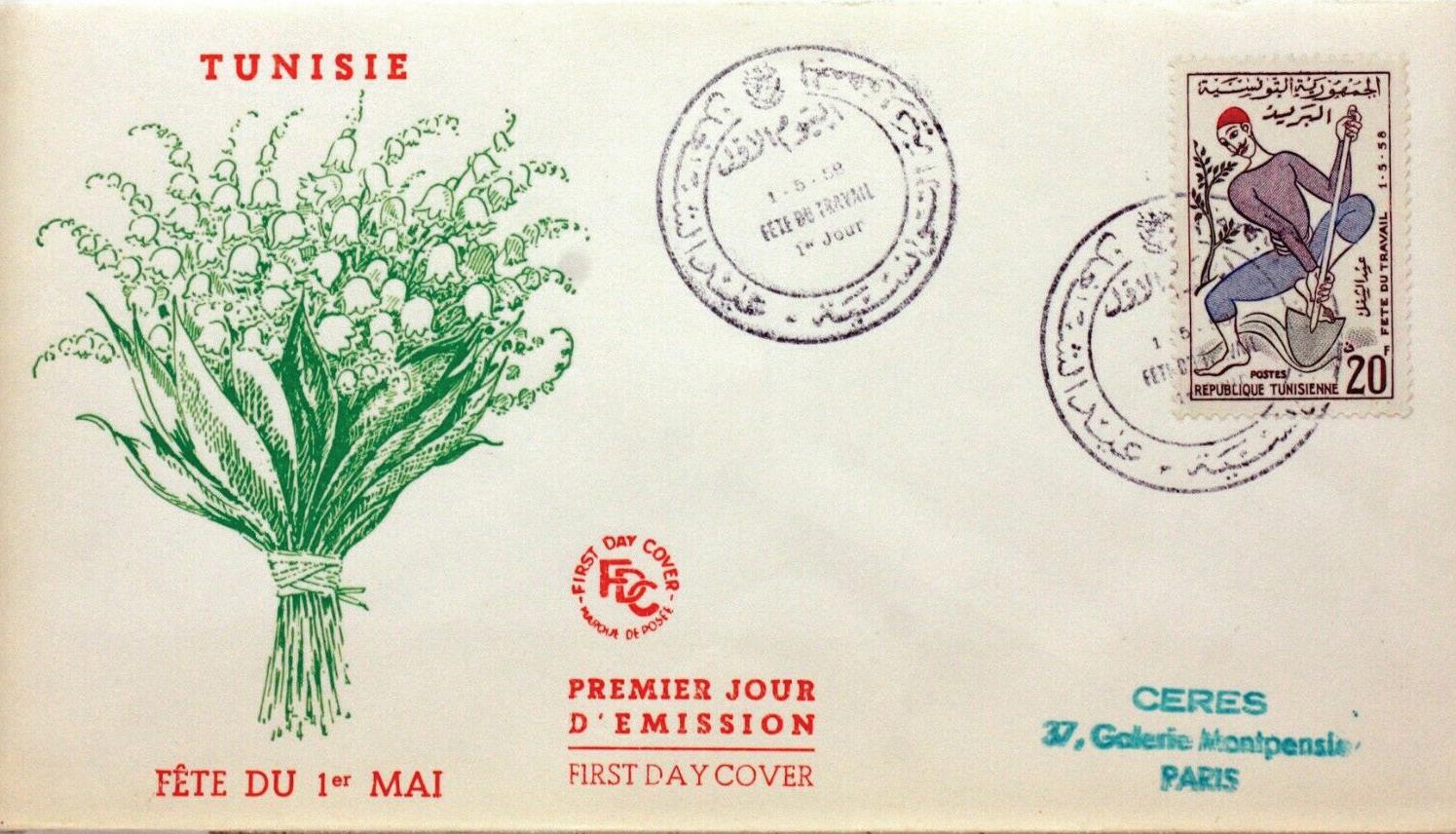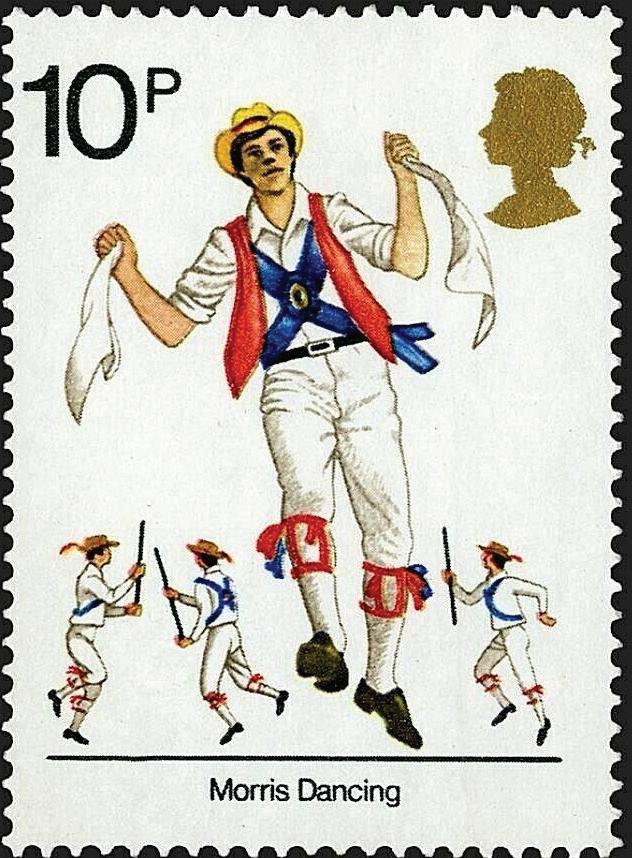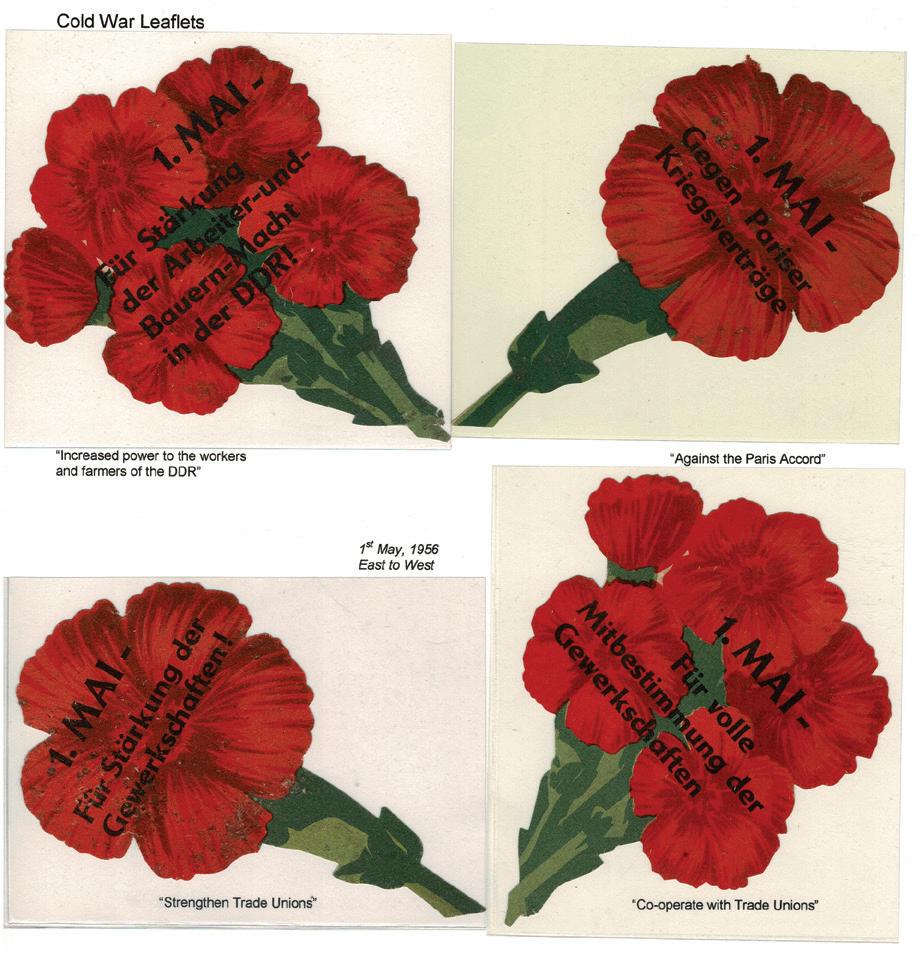
13 minute read
Introducing the APF : Stephanie Bromser
Introducing the Australian Philatelic Federation
May Day
Advertisement
May Day is an annual public holiday typically celebrated around the world on or close to 1st May. The May Day holiday commemorates the fight for workers’ rights in some countries where it is known as International Workers’ Day or Labour Day (see the commemorative cover from China to Russia in figure 1). May Day is also celebrated as the coming of spring in much of the northern hemisphere (see figure 2). Different parts of the world have different ways of marking May Day. The celebrations vary but dances, song, and food are common. Figure 1: China PRC 1 May 1959 International Labour Day FDC to Moscow
Figure 2: Austria 30 April 1990, Black Print Imperf Proof - Centenary of Labour / May Day Figure 3: Vietnam 1986, the centenary of the Chicago Haymarket rally
May Day Celebrates Workers.
May Day was born from the struggle for the eighthour day. On 1st May 1886, there were national strikes in the United States and Canada for an eight-hour day. The red flag was flown at the rally and the centenary of the event is commemorated on the Vietnam stamp shown in figure 3. At a demonstration in Haymarket Square, Chicago, a bomb exploded killing eight policemen. Eight trade unionists were arrested, four were found guilty and executed. In Paris, in 1889, the International Working Men’s Association declared 1st May an international working-class holiday in commemoration of the Haymarket Martyrs. On 1 May 1890, demonstrations took place in the United States, most countries in Europe and South America. This became an annual event with more and more countries participating.
In 1904, the Second International {an organisation of socialist and labour parties, formed on 14 July 1889 in Paris) called on all socialists and trade unionists in every country to “demonstrate energetically” each 1 May “ for the legal establishment of the eight-hour day, for the class demands of the proletariat, and universal peace.” Chinese workers celebrated their first May Day in 1920, following the Russian socialist revolution. In 1927, workers in India observed May Day with demonstrations in Calcutta, Madras and Bombay. By that time, May Day was truly a world workers’ day. The history of Labour Day in Australia spans over a century.

Stephanie Bromser
Philatelic Development Officer, APF

Figure 4: Australia 2006 Pre-Stamped Envelope commemorates 150th anniversary of the 8-hour working day Figure 5: Australia 1969 stamp commemorating 50 years of the International Labour Organisation

During the mid to late 1800s, the working day was long and arduous, where some employees would work up to 12 hours a day, six days a week. In the 1850s there was a strong push for better working conditions and in 1856, stonemasons at the University of Melbourne marched to Parliament House to push for an eight-hour working day. An agreement with employers for a 48-hour week was eventually reached and Australian workers welcomed the new eight-hour day. A victory march was held on 12 May that year and each year after that. In 1856, the new work regulations were recognized in New South Wales. This was commemorated on a pre-stamped envelope issued on the 150th anniversary in 2006 shown in figure 4. This was followed by Queensland in 1858, South Australia in 1873 and Tasmania in 1874. In 1879, the Victorian Government proclaimed the first May Day paid public holiday.
Australia was one of the founding members of the International Labour Organization that was created in 1919 as part of the Versailles Peace Treaty ending World War I (see figure 5). It grew out of nineteenth-century labour and social movements which culminated in widespread demands for social justice and higher living standards for the world’s working people.
These days Labour Day is a public holiday in all states and territories in Australia. The Northern Territory observes Labour Day on the first Monday in May. It is held on the first Monday of October in Queensland, the Australian Capital Territory, New South Wales, and South Australia. Labour Day is celebrated at different times across Australia because each state achieved the 8-hour day on different dates.
In Australia, many people use the Labour Day holiday as part of a long weekend where they can relax, spend time with friends or family members, play or watch sport, have barbecues. Some people plan a getaway trip to a coastal region, the mountains, or the countryside where they can engage in various activities such as picnics, wine-tasting at a winery, bushwalking, or camping.
In Russia and other former Soviet countries, 1

Figure 6: Soviet Union 1989 miniature sheet showing march for Labour Day
Introducing the Australian Philatelic Federation


May is an especially important holiday marking Labour Day. There are often marches or demonstrations against capitalist systems or just a celebration of unions (see figure 6).
In Poland, there is a state holiday on 1 May with celebrations focused on Labour Day festivities. May Day is closely followed by 3rd May Constitution Day. These two dates combined often result in a long weekend called Majówka when people often travel.
In Romania, Mayday is celebrated to protect farm animals and crops. It has Figure 7: Tunisia 1958 FDC showing a gardener with Lily of more of a superstitious thread than most the Valley cachet other countries. On May Day eve, country women do not work in the field or in the house to avoid devastating storms and hail coming May Day Celebrates the Start of Spring. down on the village. Animals are not to be used for The earliest recognition of the day can be traced work, or else they could die or their owners could back to the era of the Roman Republic. The people get ill. celebrated the festival of the Flora in honour of the
Demonstrations and parades have been a common goddess of flowers. May Day can also be associated Labour Day fixture in France since 1890. It is also with the Gaelic Beltane which was marked on customary to give the Lily of the Valley flower 30th April. The celebration was primarily pagan to friends or family members. This stems from however in some parts of the world, like Germany, a tradition dating back to 1561 when Charles IX the day honour St Walburga, who is attributed to presented Lily of the Valley to all ladies present at Christianising Germany. In the Catholic belief, 1 his court (see figure 7). May is also a part of one of two days that honour St. Joseph, the patron saint of workers among Catholics. England traditionally marked the day by doing things like Morris dancing, skipping around a maypole and choosing a May Queen. (See figure 8) Maypoles are traditionally made from young trees placed in the middle of a village green with multi-coloured ribbons attached to the top. The young people each take a ribbon and skip around the outside of the pole to make various Figure 8: Great Britain 1976 Cultural traditions – Morris dancing Figure 9: Monaco 1973 dancers around the maypole

Stephanie Bromser
Philatelic Development Officer, APF


patterns.
Edinburgh marks the day with the Beltane Fire Festival. Bel was the god of the sun in Celtic tradition. Ancient Celts believed the sun was taken prisoner during the winter months and the bonfires on Beltane welcomed the sun back to its rightful place celebrating the seasonal transition from the dark winter to the light summer.
In Monaco, the tradition extends throughout May marking the height of Spring. There are dances around a Maypole, decorated with flowers and red and white ribbons (the Monégasque colours) that is set up in the centre of the Palace Square (see figure 9).
In Finland, May Day is called Vappu and is the only holiday that is celebrated on the street. The day is marked by several activities such as picnics, outside partying, and dressing up. A special drink, called “sima”, is low on alcohol and is suitable for children. Across Scandinavia Walpurgisnacht is celebrated with big parties, bonfires and dressing up almost like a second Hallowe’en. Legend has it that witches would meet on this night to celebrate the coming season with bonfires and dancing. To combat the witches, local people made as much noise as possible and light huge bonfires to keep the evil witches and spirits at bay. These traditions are shown on the cover and stamps of the 2005 Aland booklet shown in figures 10 and 11). Figure 10: Aland Finland 2005 Booklet cover of “The Eve of May Day” shows the traditional Sima drink Figure 11: Aland Finland 2005 Booklet the Eve of May Day bonfires Figure 12: Germany 1965 Special Cancel for Mayday showing the tree covered in s

In rural regions of Germany, especially the Harz Mountains, Walpurgisnacht celebrations are traditionally held on the night before May Day, including bonfires and the wrapping of Maypole. In the Rhineland, 1 May is celebrated by the delivery of a maypole, a tree covered in streamers to the house of a girl the night before (see figure 12). The tree is typically from a love interest, though a tree wrapped only in white streamers is a sign of dislike.
In Italy, at the ancient festival of Calendimaggio in Assisi, people dress up in traditional dress, with swords and shields for the men. Activities include horse riding, crossbow-shooting competitions and the election of a Madonna Primavera (Queen of Spring). This is shown in the postcard in figure 13.
May Day is predominately celebrated in Northern Portugal. People put yellow flowers, known as Maias, on all doors and gates to defend those places from bad spirits, witches and the evil eye. The placement of the Mayflower or bush in the doorway must be done before midnight.
Berlin Cold War Propaganda Leaflets – 1st and 8th May
The Cold War was an ideological war between the
Introducing the Australian Philatelic Federation


two world superpowers, the United States and the Soviet Union, beginning after World War II. The two became rivals through conflicting ideologies and mutual distrust and constantly competed for power. In 1949, the French, British, and American zones merged and formed the Federal Republic of Germany (Bundesrepublik Deutschland), with its capital city Bonn. Also, in 1949, the Soviet zone became the Deutsche Democratic Republic (DDR) with the Soviet sector of Berlin as the capital.
West Germany became a democracy while East Germany was established as a Stalinist-style socialist state. The East German government was formed into a Figure 13: Postcard showing the Festival of Calendimaggio centralized and dictatorial regime. The State in Assisi Security Police (Stasi) maintained the Soviet tensions between Democracy and Communism. The expectation of the people. Free speech and opinions location of Germany as the gateway between East against the regime were not tolerated, and artistic and West Europe made it the ideal place for these and intellectual programs were strongly controlled. political struggles to occur. Germany was the site
In 1958, East Germany began to block where all the tensions between the two ideals were immigration to West Germany by establishing played out. Because of its location as the farthest barbed wire fences and patrols along the whole western city to the east, Berlin was torn in half by border between East and West Germany. Berlin the struggling parties. was the only spot open to immigration between the Germany officially declared May Day a two. In 1961, Berlin, the last place through which national holiday in 1933 under the Nationalist immigrants could leave East Germany, was blocked Socialist German Worker’s Party. In doing so, off by the “infamous” Berlin Wall, at which more May Day was tightly controlled, and divergent than 80 persons were shot while political, ideological trying to escape East Germany on interpretations and non-consecutive occasions. celebrations were
During the Cold War, Germany prohibited. After became the centre for all the World War II, workers in Communist East
Figure 14: Portugal 1981 workers day stamp showing the traditional yellow flowers, known as Maias Figure 15: Exhibit page showing propaganda leaflets flown on May Day 1956 with Soviet slogans

Stephanie Bromser
Philatelic Development Officer, APF
Germany were required to participate in state-run observances of the day. The show of strength, forbidden in Berlin’s four-power agreement, took place within two miles of the East-West Berlin zonal border.
Since 1951, the DDR celebrated May Day, the most important holiday of the international workers’ movement, with a parade in East Berlin. From 1956 onward, the celebrations opened with a military parade following the Soviet model.
The 8th May is V-E Day, the official date of the end of the War in Europe. This was celebrated with parades each year in West Germany.
During the Cold War, the two Germanys sent propaganda to each other on both the 1st and 8th of May while the parades were taking place using rockets, balloons, the mail and even by tossing leaflets off high buildings into the wind.
The following items are from a one-frame exhibit that shows the propaganda leaflets that were sent by rocket from both sides of the Berlin wall. The leaflets were fired on Labour Day and V-E Day respectively when large numbers of people could be expected to be in the streets watching the parades.
Figure 15 shows similar leaflets that were flown in small rockets from East to West Berlin on 1st May 1956. Each poppy also carries a Socialist slogan: “Increased power to the workers and farmers of the DDR”, “Oppose the Paris Peace Agreement”, “Strengthen Trade Unions” & “Full participation in Trade Unions”.
Figure 16 shows an example of anti-communist propaganda from launched West to East Berlin on 1st May 1955; The leaflet is addressed to the East German Communist Party (Sozialistische Einheitspartei Deutschlands or SED). It translates as follows:
“Have you thought about your future? Do you think you can continue to dance on top of a raging volcano?
The people hate you! If you don’t already know it, since 17th June 1953 you do have received or have escaped a deserved beating. Morally beaten, you came forward after the Nazi uprising in soviet tanks. You hid your party badges in the dirt as a precaution. We recognise you with or without your party badge.
Once your tyranny has come to an end it will sit badly on the tops of Russian bayonets. If you are driven away from your comfort zone in the nottoo-distant future – then what? Do you think you will get a free ticket to Moscow? The leaders like Ulbricht and some others maybe, but the mass of the foot soldiers of Moscow will get nothing. The inevitable end is just a little delayed.” Figure 17 is a page from the exhibit that shows a leaflet sent from West to East Berlin on 8th May 1956 demanding free elections.

Figure 16: Propaganda leaflet sent from West to East Berlin on 1st May 1955 Figure 17: Propaganda leaflet sent from West to East Berlin on 8th May 1956









